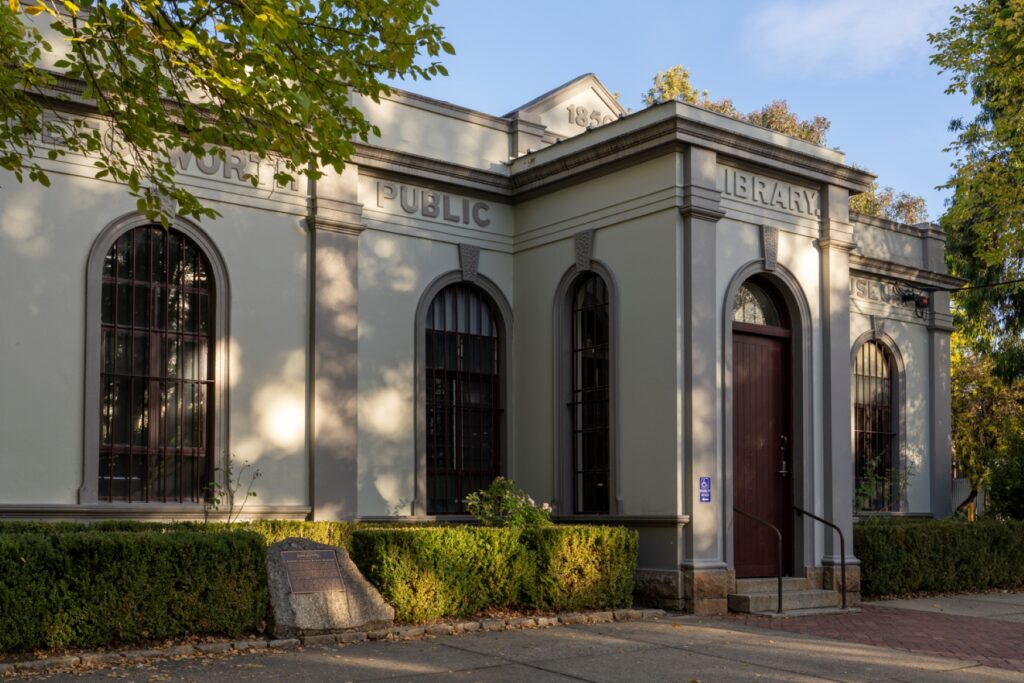
Burke Museum
It’s hard to visit Beechworth and not daydream of how life was in the Gold Rush era. So why not take it a step further? Walk the 19th-century streetscape recreation - “Street of Shops”, see a giant world globe so old it still features the Russian Empire, marvel at a “people trap” used to keep intruders off land claims and witness a thylacine! The Robert O’Hara Burke Memorial Museum is one of the oldest in Australia and proudly known as “the museum of museums”. It boasts a collection of over 30,000 items, many dating back over 150 years.
The building itself was originally built as the Beechworth Athenaeum in 1857, but after the death of Beechworth's former Superintendent of Police, Robert O'Hara Burke at Coopers Creek in 1861, the Athenaeum was renamed in his honour. Now more commonly known as the Burke Museum, it combines traditional didactic exhibition settings, combined with modern technology and interpretative techniques to bring the visitor a unique perspective on Beechworth’s place in Australian History.
Highlights of the Burke Museum collections include:
The Burke Collection
He was the Beechworth Police Superintendent, he was picked to lead the exploration from Melbourne to the Gulf of Carpentaria, and he had baths on his front porch! Robert O’Hara Burke is a legend around these parts and the collection of artifacts from that fateful journey tells his story well.

The Street of Shops
In 1979, the Street of Shops was opened, realising the vision of Curator, Roy Harvey. The addition of the Street of Shops began a new period of collecting with Roy Harvey calling to the community for donations. The response resulted in an influx of material adding to the town history/ development and local identities collections. The Shops and their contents reflect another period in museology.

Natural History Collection
When you walk in the doors of the Burke Museum, the Natural History Collection is unmissable. Spanning the entire opposite room, you’ll immediately see birds, mammals and a rare thylacine. The Burke Museum was established at a time when the pursuit of scientific knowledge through the collection of specimens taken from nature was most popular.

The Gold Rush
The discovery of gold at Beechworth in 1852 dictated the course of history and the dramatic development of the town and surrounding area. The Gold Collection presents the rushes in the area, including Spring Creek, Pennyweight Flat, Woolshed, Nine Mile and Three Mile. See all types of digging implements, machinery and of course, the “man trap”.

The Aboriginal Collection
The Burke Museum houses one of the oldest and most comprehensive single collections of its type. The museum is now entering Phase 2 of a repatriation project, returning collection objects to their traditional owners. This collection of Aboriginal artefacts is considered one of the most significant Aboriginal Collections in Australia, yet the methods of collection were ill-conceived, unethical, and illegitimate. Many items were stolen and it is not possible to rule out the possibility of some objects were gained through physical violence. The collection has generally been on display since it was purchased in the 1800s, except in 1877 when approximately 80 objects representing Australia, were displayed in the Paris World Expo. The collection was removed from display during the 2003 bushfires. Since that time only a small number of objects have been on display, reflecting the museum’s recognition of the need to consult with traditional owners regarding the appropriate display of Indigenous object.

The Chinese Collection
The Chinese had a great presence during the gold rush, boosting the town population by nearly a third, but colonial prejudice saw them living on the outskirts of town, ruled by additional license checks and enforced regulations. The Chinese Collection reflects the history of the Chinese mining community in Beechworth, particularly the involvement in local community affairs.

Ned Kelly's Death Mask
Undeniably the most fascinating piece in the collection, Ned Kelly’s death mask captivates people not only because they can see the exact face of the bushranger - every lump, bump and hair - but because of its original purposes, truly compelling signs of the times...
Death Masks in the 1800s were quite a common practice in the name of a pseudoscience called phrenology: the study of lumps and bumps on the skull to point to mental traits. Kelly’s death mask was of particular interest as a way to explore his criminal tendencies, so an hour after he was hanged, his hair and beard were shaved and plaster was applied to his whole head. The very next day, the people of Bourke Street in Melbourne were looking straight at Kelly’s death mask, complete with scientific explanations of how the shape of his head and face told of criminal inclinations.
The death mask also provided a form of propaganda, a way of showing the bushranger-obsessed public how the police and authorities handle criminals.
The death mask is currently displayed as part of the Kelly Trials Exhibition at the Beechworth Courthouse.

Burke Museum Adoption Program
Adopt a valuable piece of history in the Burke Museum and ensure its care and longevity for years to come.
Friends of the Burke Museum
Such an important collection of history is always in need of more attention, support and funds. This is where the Friends of the Burke Museum come in.
Archive Centre
Delve deeper into the history of Beechworth and the people that called it home.
